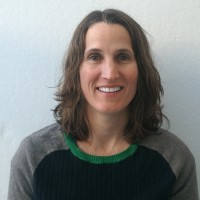Marta Gonzalez
Associate Professor of City & Regional Planning, University of California, Berkeley

With the support of several companies, cities and foundations, her research team develops computer models to analyze digital traces of information mediated by devices. They process this information to manage the demand in urban infrastructures in relation to energy and mobility. Her recent research uses billions of mobile phone records to understand the appearance of traffic jams and the integration of electric vehicles into the grid, smart meter data records to compare the policy of solar energy adoption and card transactions to identify habits in spending behavior.
Prior to joining Berkeley, Marta worked as an Associate Professor of Civil and Environmental Engineering at MIT, a member of the Operations Research Center and the Center for Advanced Urbanism. She is a member of the scientific council of technology companies such as Gran Data, PTV and the Pecan Street Project consortium.
Modeling and Planning Urban Systems with Novel Data Sources
Urban mobility models are important in a wide range of applications. Current mainstream models require socio-demographic information from costly manual surveys, which are small in sample sizes and updated in low frequency. Gonzalez will present the TimeGeo modeling framework of individual mobility that extracts all required features from passive, and sparse digital traces of mobile phones. In the second part of the lecture, she will present applications of this framework in city planning. Examples are managing the adoption of electric vehicles, extracting behavioral information from credit card transactions, and managing traffic demand.












